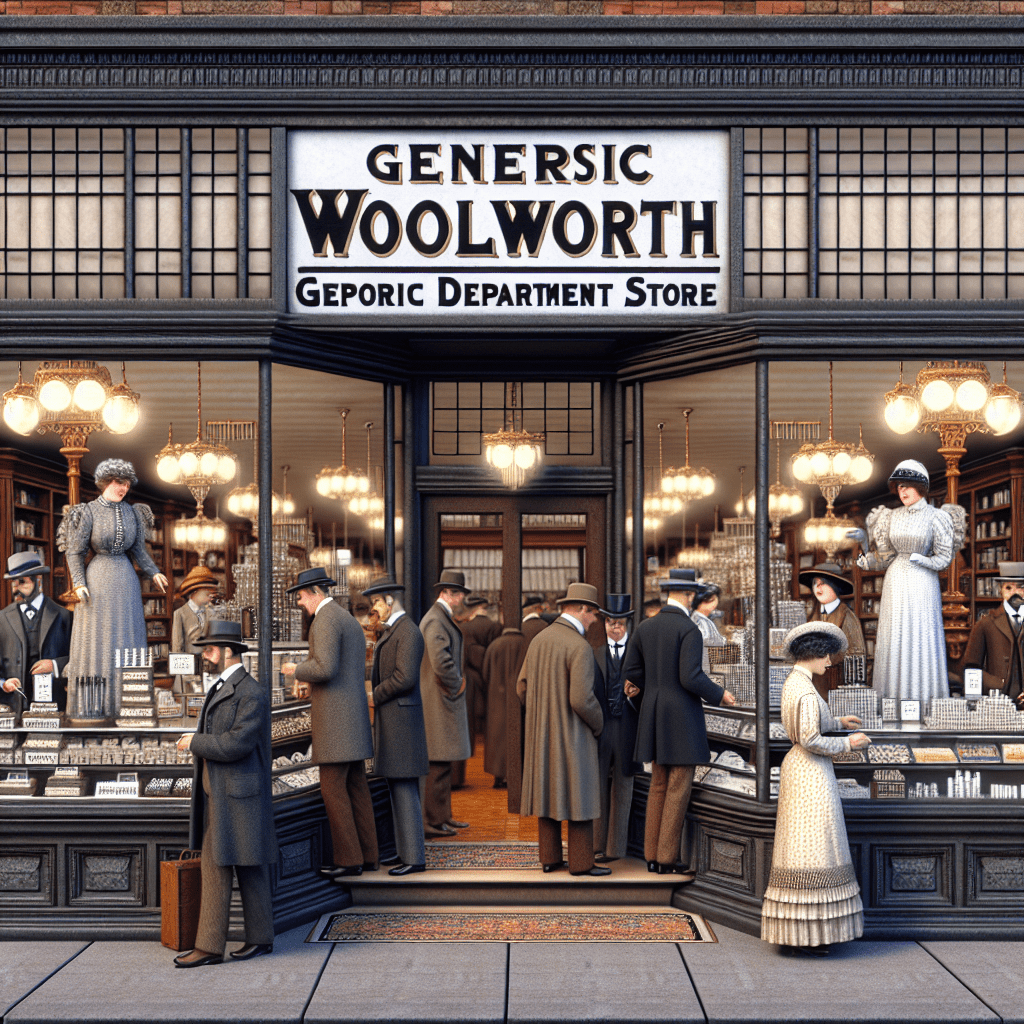### Woolworths: History and Evolution of a Retail Icon ###
Woolworths is a name that conveys nostalgia and commerce, having gone through several phases of transformation since its inception. This chain of retail stores remarkably contributed to the historical landscape of shopping, influencing customer behavior and the business of retail itself. In this extensive article, we explore the origins, growth, expansion, and eventual shift in Woolworth’s business model.
Origins and Growth of Woolworths
Woolworths began its story in 1879 when Frank Winfield Woolworth opened the first ‘Great 5 Cent Store’ in Utica, New York. However, it wasn’t until his second attempt in Lancaster, Pennsylvania, where the Woolworth’s concept truly took off. The idea was simple but revolutionary: selling a wide range of products for just five cents. This pricing approach appealed to a broad customer base, prompting rapid growth and expansion.
The success of the ‘five-and-dime’ store model allowed Woolworth to flourish, triggering a widespread retail movement that reshaped consumer markets. By 1911, Woolworth’s had merged with several other five-and-ten cent chains to form F.W. Woolworth Company—a move that underscored its dominance.
Expansion and Influence
The mid-20th century signaled a golden era for Woolworths, marked by international expansion and diversification. The brand established itself as a global player with locations not only in North America but also in the United Kingdom, Germany and, later on, in South Africa and Australia—although these southern hemisphere outlets were independently operated.
In many regions, Woolworths became a cornerstone of the High Street. More than just stores—Woolworths branches were social spaces where people gathered, dined at the lunch counters, and shopped for everything from toys to kitchenware. It was during this period that Woolworth’s luxury skyscraper—the Woolworth Building in New York—was constructed, becoming one of the most recognized buildings in Manhattan and widely referred to as the “Cathedral of Commerce.”
Struggles and Decline
Despite its early success and expansion, Woolworths faced challenges adapting to the evolving retail landscape dominated by specialized stores and burgeoning supermarkets. By late 20th century, competition from both discount department stores like Walmart and Kmart as well as from emerging shopping malls began to put enormous pressure on the five-and-dime business model.
These stores’ varied prices rendered Woolworth’s single-price strategy obsolete, challenged its marketing proposition, and altered consumer expectations. Additionally, shifts in the urban geography reduced foot traffic to traditional downtown areas where many Woolworths stores were located.
By the 1980s and early 1990s, these strategic bottlenecks led to gradually declining profits and thus store closures.
Reinvention and Present-Day Operations
Reacting to market pressures, Woolworth Corporation—having dropped “F.W.” from its name—started diversifying their portfolio. They shifted focus to athletic goods through Foot Locker and other specialty retail endeavors. Eventually, by 1997, Woolworth Corporation transformed into Venator Group before settling on the Foot Locker name, marking the end of an era.
Meanwhile in international markets like Australia and South Africa, independently operated branches under the Woolworths brand continued but tailored their model to fit local consumer patterns. Notably, Australian Woolworths pivoted towards groceries, becoming one of the continent’s leading supermarket chains.
